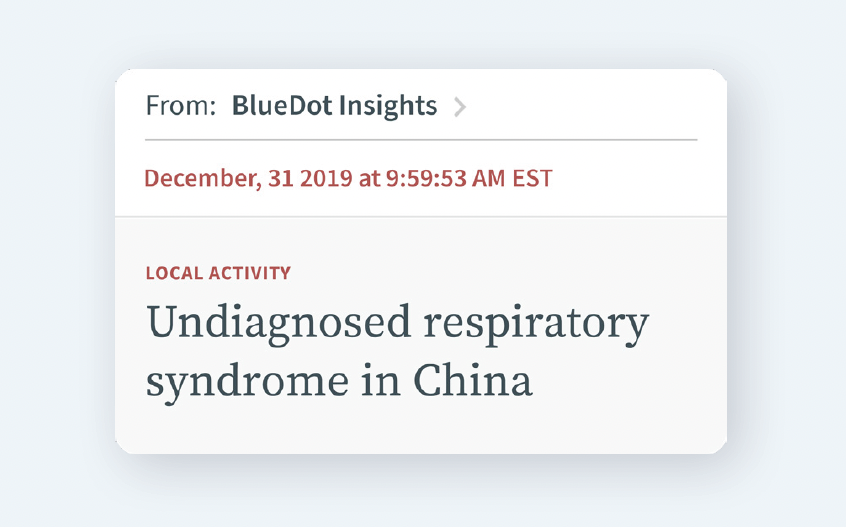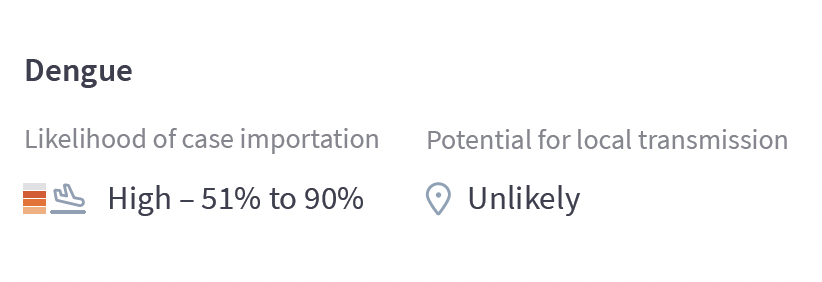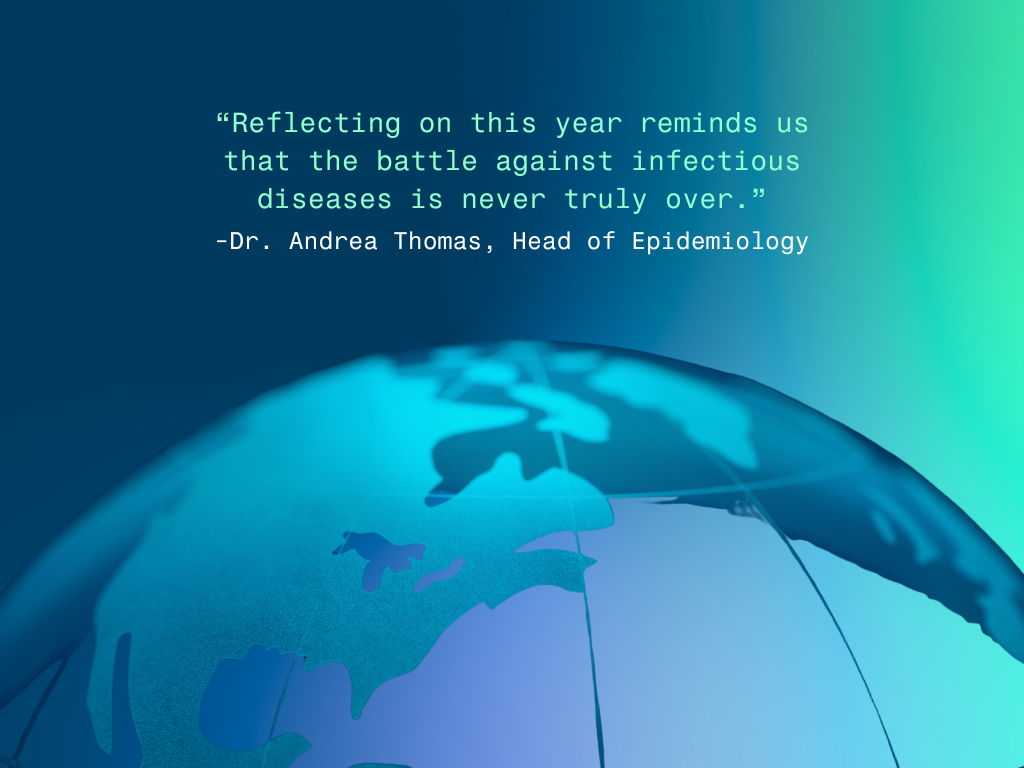Air Canada is Canada’s largest airline, among the 20 largest airlines in the world, and a founding member of the Star Alliance network. It was the first airline to subscribe to BlueDot Insights, beginning a partnership in February 2019 in direct response to infectious disease threats seen around Ebola outbreaks. BlueDot has helped Air Canada quantify risks and coordinate responses to COVID-19 and numerous other infectious disease outbreaks using BlueDot’s outbreak intelligence — and beyond that, the reputational value of the partnership has tangibly benefited the company, its employees, and its passengers.
1. A Need Highlighted by Ebola
Joseph Bajzath, Director of Corporate Safety & Emergency Management: Our VP of Safety asked us to look at BlueDot through the lens of some of the issues we’ve had to deal with over the past few years. It was primarily around the Ebola outbreak that was taking place in Congo at the time. We asked, does this help us identify what the threat is to our organization?
Dr. Jim Chung, Chief Medical Officer: This was on our mind after our experience and lessons learned with Ebola, and looking at the next potential outbreak. There was a need for this type of service as we anticipated the next infectious disease outbreak.
Joseph Bajzath: One of the benefits we get from BlueDot is quantifying what our risk is.
BlueDot informed decisions around advising some of our international stations to spruce up our screening protocol for passengers coming into Brussels from Congo. We were looking at taking those measures where we felt there was more exposure to our operations.
Pre-COVID, we had measles in Hong Kong and hand-foot-and-mouth disease in the Dominican Republic. We had some guidance there that helped us go back to our resorts folks to tell them there had to be some additional measures taken in sanitizing the resorts.
2. Early Warning of COVID-19
Joseph Bajzath: BlueDot was the first to highlight to us that there was this pneumonia outbreak that was happening in China. So that gave us visibility, and from there, things unfolded pretty quickly.
Dr. Jim Chung: The early notification of the SARS-like pneumonia in Wuhan perked up our ears. That got us thinking about the early preparation. Because of that, we had more time to do that internal checklist on where we sat from a planning process.
Joseph Bajzath: We actually took advantage of that and pulled our pandemic response plan. We did a review very early in January, so before we launched the pandemic task force we had updated the plan. We were able to check through our response.

3. Quantitative Decision Support
Joseph Bajzath: If we’re able to tell senior leadership the quantified risk of importation [with predictive intelligence] of a particular outbreak into not only Canada but our hubs, that really goes a long, long way to helping them make the appropriate decisions.

4. Enhancing Safety Culture
Joseph Bajzath: From a health and safety perspective, the ability for us to communicate to our employees that we are associated with and informed by a third-party infectious disease surveillance company really went a long way to support our safety culture in the organization.
The benefit of having town halls with our frontline employees, and having Dr. Khan participate in those town halls, provided a third-party independent perspective and expertise. That was really well received by our employee group and really helped stabilize some of the concerns that they were seeing.
The fact that we’re able to address some of the concerns with our frontline employees right up front and communicate how we’re mitigating them gives us that operational advantage.
5. Return on Investment
Joseph Bajzath: If I had to quantify BlueDot’s value, one way would be to assume you would have X amount of disruption [from infectious disease threats]. How many flights would be delayed with how many passengers on board and how many hotel rooms would result? You can put a cost to this pretty quickly.
“Even one avoidance of a flight being cancelled with a wide body of 450 people onboard helps support the return on investment for something like this.”
That would be one way of looking at the return on investment. We were quite proud of the fact that very early on in the response to this we were able to align ourselves with you guys and make reference to the fact we were working with BlueDot not only internally but externally, too.
Dr. Jim Chung: I would recommend BlueDot as well and would certainly echo Joe’s comments.









